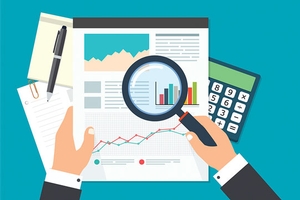Policy analysis is a systematic approach to evaluating the design, implementation, and impact of policies. It plays a crucial role in helping decision-makers assess the effectiveness of various options available to address societal issues. By applying analytical frameworks and methodologies, policy analysts provide insights that inform governmental and organizational actions. This article delves into the components of policy analysis, its significance in governance, and the techniques employed in the field.
The Components of Policy Analysis
At its core, policy analysis consists of several key components: problem definition, options assessment, evaluation of impacts, and recommendations. Each of these stages is integral to the process and ensures a comprehensive examination of the policy in question.
- Problem Definition: This initial step involves clearly articulating the issue that necessitates a policy response. Analysts gather data and consult stakeholders to understand the problem’s context, scale, and implications. A well-defined problem statement sets the foundation for the entire analysis.
- Options Assessment: After identifying the problem, analysts explore various policy alternatives that could effectively address it. This involves reviewing existing policies, examining best practices from other jurisdictions, and considering innovative solutions. The goal is to develop a range of feasible options that policymakers can consider.
- Evaluation of Impacts: Once potential options are identified, the next step is to assess their likely impacts. This includes both qualitative and quantitative analysis. Analysts may use models, simulations, or case studies to predict outcomes, weighing the benefits against potential risks and costs. This evaluation is crucial for understanding the trade-offs associated with each option.
- Recommendations: Based on the analysis, policymakers receive evidence-based recommendations. These suggestions should not only focus on the most effective solution but also consider political feasibility, stakeholder interests, and the broader social implications.
The Significance of Policy Analysis
The importance of policy analysis cannot be overstated in today’s complex governance landscape. As societies face multifaceted challenges—ranging from economic inequality to climate change—effective policy solutions become increasingly vital. Here are several reasons why policy analysis is essential:
- Informed Decision-Making: Policy analysis equips decision-makers with relevant data and insights, enhancing their ability to make informed choices. By relying on evidence rather than assumptions, policymakers can develop strategies that are more likely to succeed.
- Resource Allocation: Governments operate with limited resources, making it critical to allocate funds and efforts effectively. Through rigorous analysis, policymakers can identify the most impactful interventions, ensuring that resources are used efficiently to address pressing issues.
- Accountability and Transparency: A structured policy analysis process fosters accountability in governance. When decisions are grounded in analysis, stakeholders can better understand the rationale behind policies, promoting transparency and trust in governmental actions.
- Adaptability and Learning: Policy analysis encourages a culture of continuous learning. By evaluating the outcomes of implemented policies, analysts can provide feedback that helps refine existing strategies and develop new approaches in response to changing circumstances.
Techniques in Policy Analysis
To carry out effective policy analysis, analysts employ a variety of techniques and methodologies. Some common approaches include:
- Cost-Benefit Analysis (CBA): This technique quantifies the expected benefits and costs of a policy option, providing a straightforward metric for comparison. By translating impacts into monetary terms, CBA helps policymakers weigh the financial implications of their choices.
- Stakeholder Analysis: Understanding the perspectives and influences of different stakeholders is crucial in policy analysis. This technique assesses how various groups will be affected by a policy and identifies potential allies or opponents, informing the strategic planning process.
- Scenario Planning: This approach involves creating various hypothetical scenarios based on different policy choices. By exploring potential future outcomes, analysts can help policymakers anticipate challenges and prepare for uncertainty.
- Policy Simulation Models: Advanced analytical tools can simulate the potential impacts of policy options under various conditions. These models are particularly useful in complex systems where multiple variables interact, such as environmental policies or healthcare reform.
Challenges in Policy Analysis
While policy analysis is a powerful tool, it is not without challenges. Analysts must navigate issues such as data limitations, political pressures, and the unpredictability of human behavior. Additionally, the increasing complexity of societal problems requires interdisciplinary approaches, often necessitating collaboration across fields like economics, sociology, and environmental science.
Moreover, analysts must be aware of their own biases and the potential for confirmation bias in their evaluations. Maintaining objectivity and rigor in the analysis is crucial to ensuring that the recommendations provided are credible and actionable.
Conclusion
In an era where effective governance is paramount, policy analysis stands out as an essential tool for shaping public policy. By providing a structured framework for evaluating issues, options, and impacts, it enables decision-makers to craft informed strategies that address the needs of society. As challenges continue to evolve, the role of policy analysis will only grow in significance, emphasizing the need for skilled analysts who can navigate complex environments and foster positive change. Through diligent analysis, we can move toward more effective, equitable, and sustainable policies that benefit all members of society.
